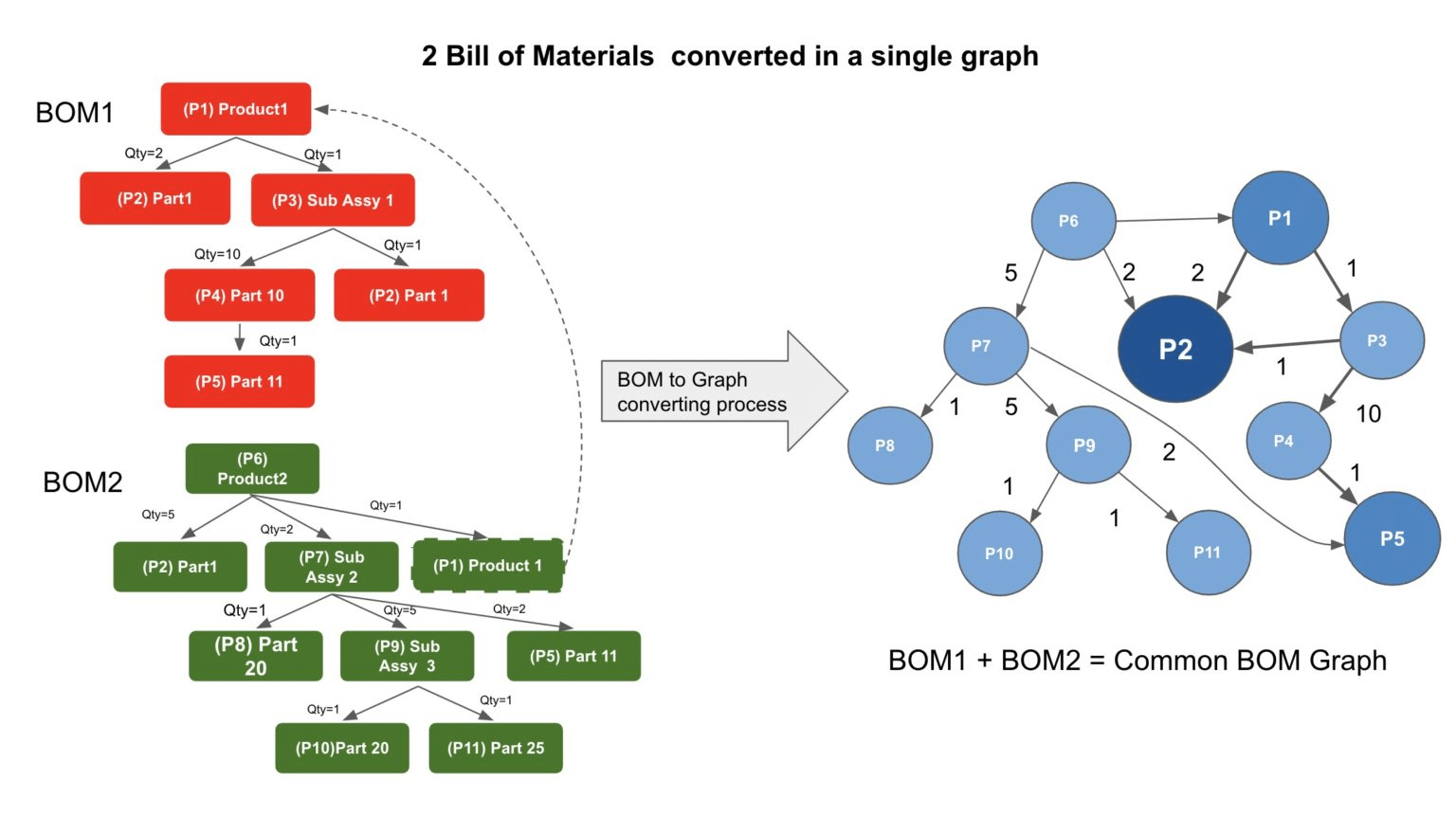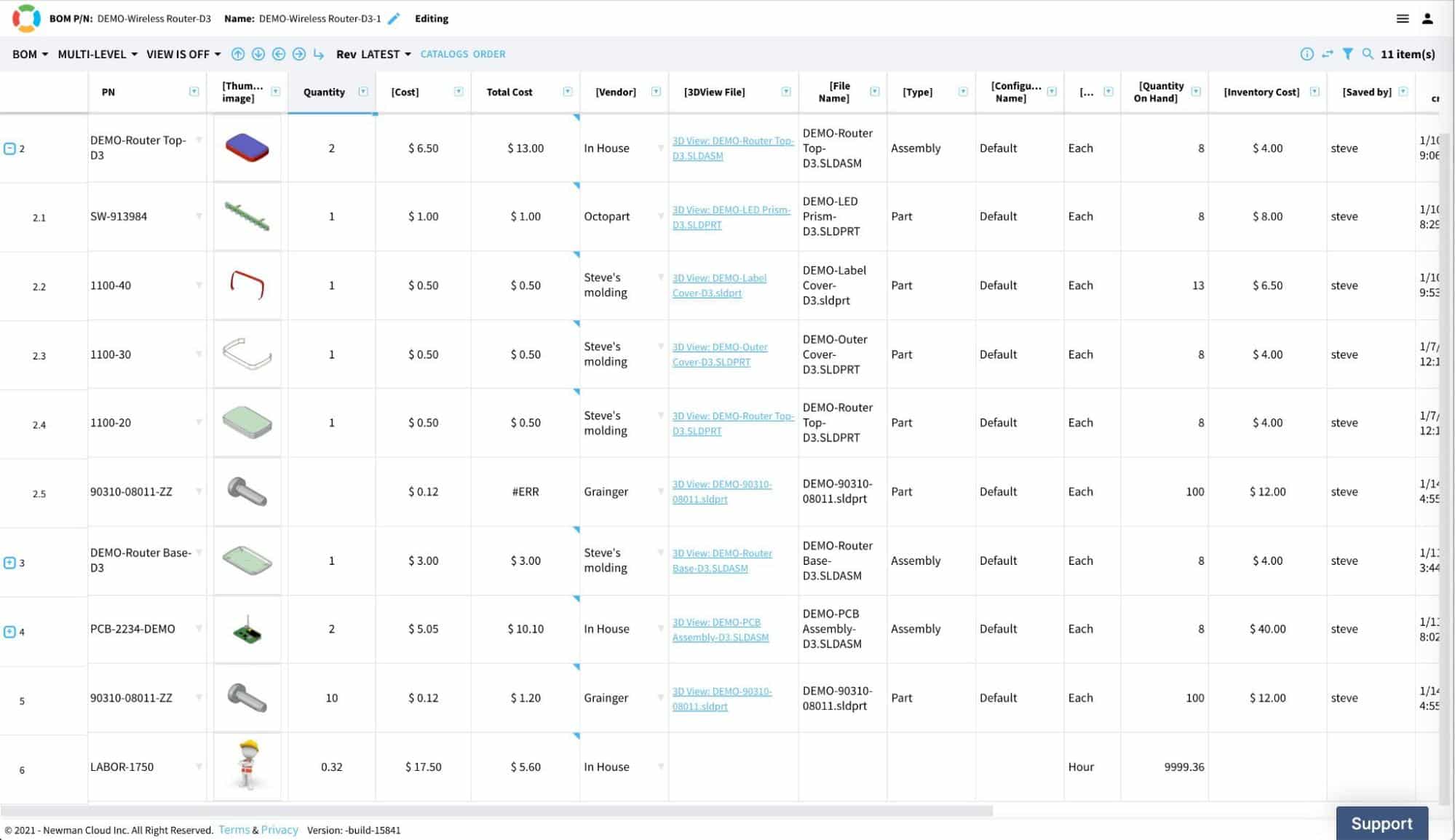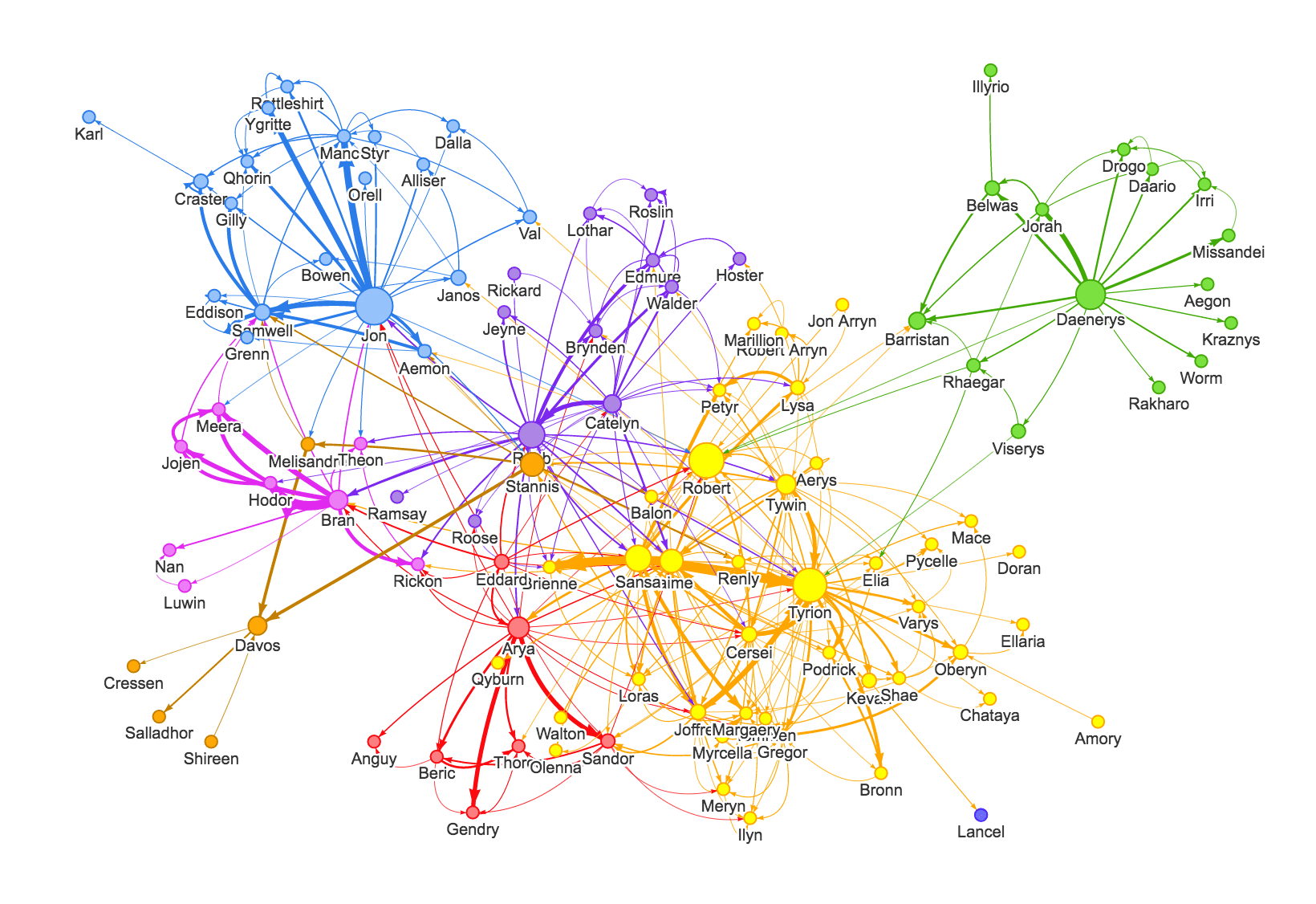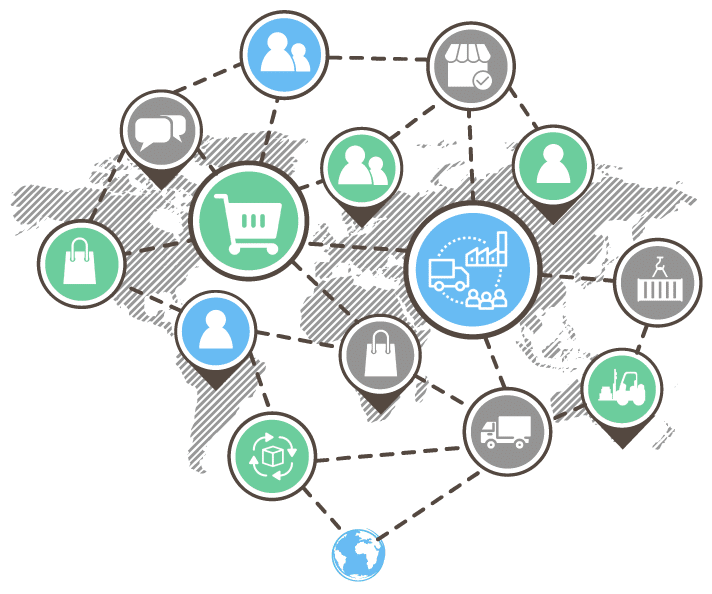
Graphs and Networks are important parts of OpenBOM’s vision and strategy. Today, I want to go into more detail on why it is important and how OpenBOM is using Graphs, and how we plan to offer applications for data intelligence and analytics.
Graphs and Networks
Graph technology is the foundation for many applications focusing on data analytics, network, and intelligence. Building a Knowledge Graph is becoming a popular approach to create a data foundation for these applications. Check out some of my earlier articles where I speak about how graphs and connected data structures can empower manufacturing companies to optimize processes and rationalize the decision-making process.
Graph models are a source of intelligence that is changing the way PLM, ERP, CRM, and other applications can provide a unique value to manufacturing companies by introducing intelligence and insight about data and processes. The technology used for graph and network modeling is transforming PLM architecture and becoming the foundation of new intelligent applications.
Product Information and Demand for Intelligence in Manufacturing
Product information such as design, bill of materials, production planning, purchasing is a great source of knowledge and information. Bill of Materials and product structures is a natural fit for graphs. Bill of Materials queries are complex and usually create substantial challenges for existing PLM architectures. The need for PLM systems to recombine the data coming from multiple sources such as design, production, supply chain, and others creates a big pressure of bringing new types of applications capable of organizing the data in a flexible model.
The problem of multi-disciplinary data modeling (eg. mechanical, electronic, software) is multiplied by the problem of tenant modeling. Manufacturing companies aren’t working in isolation. Manufacturing companies are connected to contractors and suppliers and demand holistic data management, yet the creation of data security layers and data segmentation is very important to make these applications for manufacturing companies.
Check our earlier articles about Graphs, Networks, and Bill of Materials. It will give you an idea of how Bill of Materials and related information can be transformed into a graph model and how such a graph model is capable of intertwining and connecting different data silos to create a “global BOM graph” that can be used as a source of analytics and intelligence.
OpenBOM Graph Foundation
At OpenBOM, we’ve been inspired by the power of semantic technologies and graph databases. OpenBOM data management architecture is driven by polyglot persistence vision and combines multiple databases to provide an optimum of performance, scalability, and intelligence for OpenBOM’s platform and applications. OpenBOM is using the Neo4j graph database to manage relationships and provide a rich semantic layer for information management in OpenBOM.
The following picture is a simplified representation of how Bill of Materials data is converted into a graph model.

As a user of OpenBOM, you’re getting a simple and intuitive spreadsheet-like user experience.

OpenBOM’s simple spreadsheet-like collaborative user interface is a complete graph model of product data with all relationships, information about users, changes, files, and many other data elements. OpenBOM’s flexible data model allows you to create some unique solutions.
Graph Centered Applications
Graph technologies such as graph databases open an opportunity for data visualization and analytics using the data in the graphs. There are multiple applications available today that provide graph visualization and graph empowered insight and analytics.
To give you some inspiration, check the visualization tools from Neo4j library. You will get an idea of how powerful graph visualization tools could be.

To give you a more specific example, check some of Neo4j Supply Chain management use cases with companies like Airbus, Volvo, Caterpillar, and some others.

At OpenBOM, we bring specific applications to address the problem of data analytics and impact analysis using product information loaded into OpenBOM. To give you an idea, think about design data in OpenBOM loaded using CAD Add-ins from multiple sources – OEM, suppliers, and contractors, combined with pricing and sourcing information from vendors. You can combine a knowledge graph of your product and get answers to painful questions such as
- What will be the cost impact if component A cost increases?
- What will be the impact on product delivery if supplier B is shut down?
- Do we have parts with a single-source supplier for the product?
- How to validate compliance with the product?
- others…
To perform such analysis, OpenBOM can be available in multiple technological stacks and environments (AWS, Azure, etc.) as well as deployed by enterprise IT organizations. Talk to us about your IT stack and related requirements.
Conclusion
The power of OpenBOM multi-tenant data management combined with all engineering integrations and collaborative features of OpenBOM, created a data foundation that can be used to create a new type of intelligent manufacturing application.
The graph database technologies used by OpenBOM, multiplied by the data, is a source of intelligence for manufacturing companies using this data to empower their decision-making for new product development, supply chain optimization, and procurement.
Interested to learn more about OpenBOM Graph Centered data intelligence and application availability? Please contact us and we will be happy to discuss how to help you.
In the meantime, sign up for our 14 day trial and Try OpenBOM out for FREE.
Best, Oleg
Join our newsletter to receive a weekly portion of news, articles, and tips about OpenBOM and our community.









